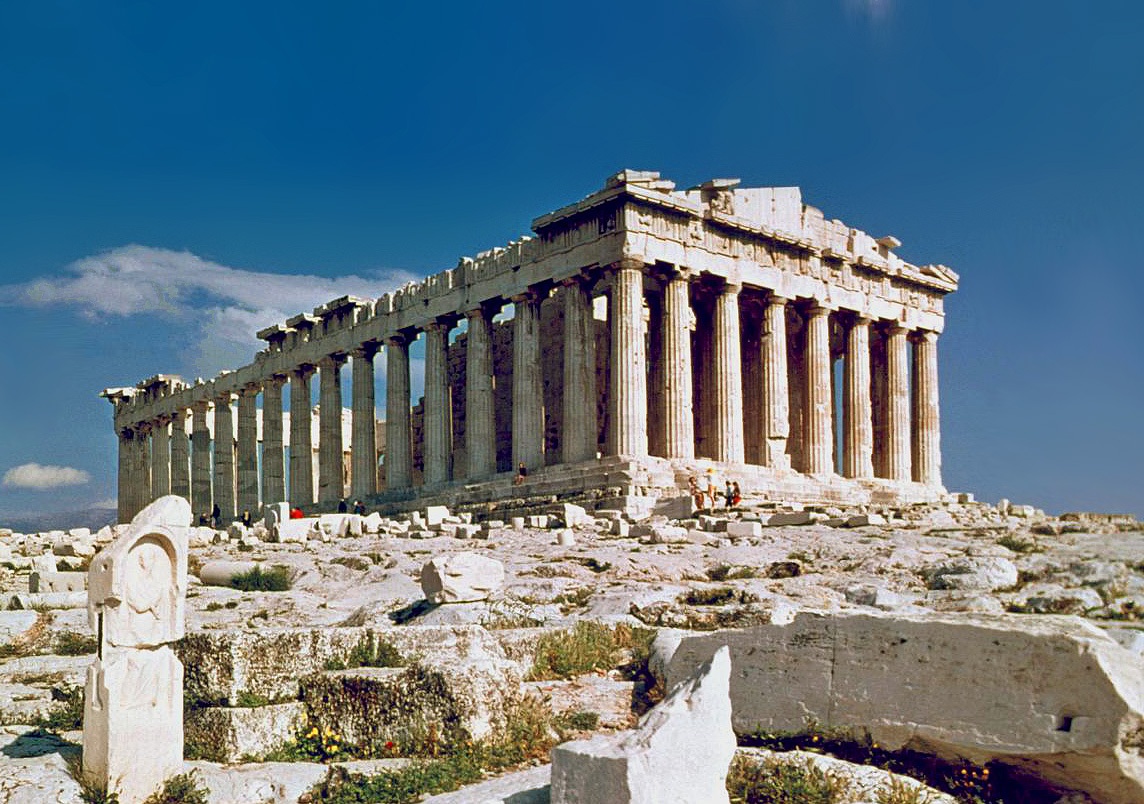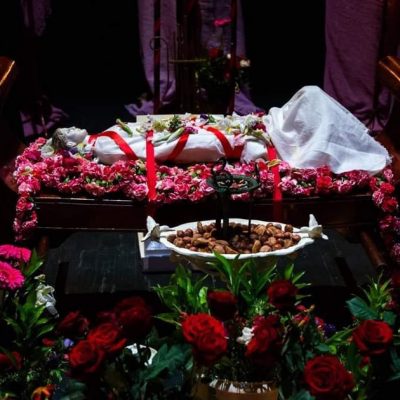|
Church Of The Guanche People
The Church of the Guanche People () is a religious organisation, founded in 2001 in the city of San Cristóbal de La Laguna, Tenerife, Canary Islands, Spain. Its goal is to revive and spread the traditional religion of the indigenous Berber Guanche people who occupied the islands at the time of Castillian conquest. In 2008, the Church had approximately 300 members.Martin, Veronica (2008)5% of Canarians profess a minority religion (Un 5% de canarios profesa una religión minoritaria), ''La Opinión de Tenerife'' newspaper, 3 October. The Church of the Guanche People is included in the studies of minority religions in the Canary Islands. It was founded by a group of Canarian devotees of the goddess Chaxiraxi, a prominent religious figure associated with the harvest in the Guanche religion. The Church of the Guanche People has performed baptisms and weddings according to what they know of Guanche custom. In 2002, a wedding held in accordance with purported Guanche rites took ... [...More Info...] [...Related Items...] OR: [Wikipedia] [Google] [Baidu] |
Neopaganism
Modern paganism, also known as contemporary paganism and neopaganism, spans a range of new religious movements variously influenced by the Paganism, beliefs of pre-modern peoples across Europe, North Africa, and the Near East. Despite some common similarities, contemporary pagan movements are diverse, sharing no single set of beliefs, practices, or religious texts. Religious studies, Scholars of religion may study the phenomenon as a movement divided into different religions, while others study neopaganism as a decentralized religion with an array of Religious denomination, denominations. Adherents rely on Christianization, pre-Christian, folkloric, and ethnographic sources to a variety of degrees; many of them follow a spirituality that they accept as entirely modern, while others claim to adhere to Prehistoric religion, prehistoric beliefs, or else, they attempt to revive indigenous religions as accurately as possible. List of modern pagan movements, Modern pagan movements are ... [...More Info...] [...Related Items...] OR: [Wikipedia] [Google] [Baidu] |
Germanic Heathenism
Heathenry, also termed Heathenism, contemporary Germanic Paganism, or Germanic Neopaganism, is a Modern paganism, modern pagan religion. Scholars of religious studies classify it as a new religious movement. Developed in Europe during the early 20th century, its practitioners model it on the Germanic paganism, pre-Christian religions adhered to by the Germanic peoples of the Iron Age Europe, Iron Age and Early Middle Ages. In an attempt to reconstruct these past belief systems, Heathenry uses surviving historical, archaeological, and Germanic folklore, folkloric evidence as a basis, although approaches to this material vary considerably. Heathenry does not have a unified theology but is typically polytheism, polytheistic, centering on a pantheon (religion), pantheon of list of Germanic deities, deities from pre-Christian Germanic Europe. It adopts cosmology, cosmological views from these past societies, including an animism, animistic view of the cosmos in which the natural ... [...More Info...] [...Related Items...] OR: [Wikipedia] [Google] [Baidu] |
Guanche Mythology
Guanche may refer to: *Guanches The Guanche were the Indigenous peoples, indigenous inhabitants of the Spain, Spanish Canary Islands, located in the Atlantic Ocean some to the west of modern Morocco and the North African coast. The islanders spoke the Guanche language, which i ..., the indigenous people of the Canary Islands * Guanche language, an extinct language, spoken by the Guanches until the 16th or 17th century *'' Conus guanche'', a sea snail of family Conidae {{Disambiguation Language and nationality disambiguation pages ... [...More Info...] [...Related Items...] OR: [Wikipedia] [Google] [Baidu] |
Modern Pagan Organisations Based In Spain
Modern may refer to: History *Modern history ** Early Modern period ** Late Modern period *** 18th century *** 19th century *** 20th century ** Contemporary history * Moderns, a faction of Freemasonry that existed in the 18th century Philosophy and sociology * Modernity, a loosely defined concept delineating a number of societal, economic and ideological features that contrast with "pre-modern" times or societies ** Late modernity Art * Modernism ** Modernist poetry * Modern art, a form of art * Modern dance, a dance form developed in the early 20th century * Modern architecture, a broad movement and period in architectural history ** Moderne, multiple architectural styles ** Modernisme a.k.a. Catalan Modernism * Modern music (other) Geography *Modra, a Slovak city, referred to in the German language as "Modern" Typography * Modern (typeface), a raster font packaged with Windows XP * Another name for the typeface classification known as Didone (typography) * Modern, a ... [...More Info...] [...Related Items...] OR: [Wikipedia] [Google] [Baidu] |
2001 Establishments In Spain
1 (one, unit, unity) is a number, numeral, and glyph. It is the first and smallest positive integer of the infinite sequence of natural numbers. This fundamental property has led to its unique uses in other fields, ranging from science to sports, where it commonly denotes the first, leading, or top thing in a group. 1 is the unit of counting or measurement, a determiner for singular nouns, and a gender-neutral pronoun. Historically, the representation of 1 evolved from ancient Sumerian and Babylonian symbols to the modern Arabic numeral. In mathematics, 1 is the multiplicative identity, meaning that any number multiplied by 1 equals the same number. 1 is by convention not considered a prime number. In digital technology, 1 represents the "on" state in binary code, the foundation of computing. Philosophically, 1 symbolizes the ultimate reality or source of existence in various traditions. In mathematics The number 1 is the first natural number after 0. Each natural number, ... [...More Info...] [...Related Items...] OR: [Wikipedia] [Google] [Baidu] |
Kemetism
Kemetism (also Kemeticism or Kemetic paganism; sometimes referred to as Neterism from wikt:nṯr, netjer "god") is a Modern paganism, neopagan religion and revival of the ancient Egyptian religion, emerging during the 1970s. A ''Kemetic'' is one who follows Kemetism. There are several main groups, each of which takes a different approach to its beliefs, ranging from eclecticism, eclectic to polytheistic reconstructionist, reconstructionist. These can be divided into three types: reconstructed Kemetism, a Syncretism, syncretic approach, and the more monotheistic Kemetic Orthodoxy. Etymology The movement's name is based on an Endonym and exonym, endonym of Ancient Egypt, Egypt, ''Egypt#Names, Kemet'' (the Egyptological pronunciation, conventional vocalization of Egyptian hieroglyphic, hieroglyphic notation ''km.t''). The word is also sometimes written as Takemet, from the fuller ''tꜣ km.t.'' In translation from Egyptian language, Egyptian, it means "black" (or in longer form ... [...More Info...] [...Related Items...] OR: [Wikipedia] [Google] [Baidu] |
Hellenism (religion)
Hellenism () in a religious context refers to the modern pluralistic religion practiced in Greece and around the world by several communities derived from the beliefs, mythology, and rituals from antiquity through and up to today. It is a system of thought and spirituality with a shared culture and values, and common ritualistic, linguistic, and literary tradition. More broadly, Hellenism centers itself on the worship of Hellenic deities, namely the twelve Olympians. Greeks who identify their religion and way of life with Hellenism are commonly referred to as Εθνικοί Έλληνες (Ethnic Hellenes). Non-Greek devotees of the Greek gods who embody Hellenic ideals commonly referred to Hellenists. Hellenism is sometimes referred to as a Pagan religion; this classification is also at times used as a pejorative for Greeks. ''Olympianismos'' (Olympianism) and ''Neopaganismos'' (Neopaganism) are used by the Greek Orthodox Church in a derogatory manner, while the term ''Dod ... [...More Info...] [...Related Items...] OR: [Wikipedia] [Google] [Baidu] |
Liturgical Calendar
The liturgical year, also called the church year, Christian year, ecclesiastical calendar, or kalendar, consists of the cycle of liturgical days and seasons that determines when feast days, including celebrations of saints, are to be observed, and which portions of scripture are to be read. Distinct liturgical colours may be used in connection with different seasons of the liturgical year. The dates of the festivals vary somewhat among the different churches, although the sequence and logic is largely the same. Liturgical cycle The liturgical cycle divides the year into a series of seasons, each with their own mood, theological emphases, and modes of prayer, which can be signified by different ways of decorating churches, colours of paraments and vestments for clergy, scriptural readings, themes for preaching and even different traditions and practices often observed personally or in the home. In churches that follow the liturgical year, the scripture passages for ... [...More Info...] [...Related Items...] OR: [Wikipedia] [Google] [Baidu] |
Canary Islands
The Canary Islands (; ) or Canaries are an archipelago in the Atlantic Ocean and the southernmost Autonomous communities of Spain, Autonomous Community of Spain. They are located in the northwest of Africa, with the closest point to the continent being 100 kilometres (62 miles) away. The islands have a population of 2.25 million people and are the most populous overseas Special member state territories and the European Union, special territory of the European Union. The seven main islands are from largest to smallest in area, Tenerife, Fuerteventura, Gran Canaria, Lanzarote, La Palma, La Gomera, and El Hierro. The only other populated island is Graciosa, Canary Islands, La Graciosa, which administratively is dependent on Lanzarote. The archipelago includes many smaller islands and islets, including Alegranza, Islote de Lobos, Isla de Lobos, Montaña Clara, Roque del Oeste, and Roque del Este. It includes a number of rocks, including Roque de Garachico, Garachico and Roques de ... [...More Info...] [...Related Items...] OR: [Wikipedia] [Google] [Baidu] |
Baptism
Baptism (from ) is a Christians, Christian sacrament of initiation almost invariably with the use of water. It may be performed by aspersion, sprinkling or affusion, pouring water on the head, or by immersion baptism, immersing in water either partially or completely, traditionally three times, once for each person of the Trinity. The synoptic gospels recount that John the Baptist baptism of Jesus, baptized Jesus., , Baptism is considered a sacrament in most churches, and as an ordinance (Christian), ordinance in others. Baptism according to the Trinitarian formula, which is done in most mainstream Christian denominations, is seen as being a basis for Christian ecumenism, the concept of unity amongst Christians. Baptism is also called christening, although some reserve the word "christening" for the Infant baptism, baptism of infants. In certain Christian denominations, such as the Catholic Churches, Eastern Orthodox Churches, Oriental Orthodox Churches, Assyrian Church of t ... [...More Info...] [...Related Items...] OR: [Wikipedia] [Google] [Baidu] |
Chaxiraxi
Chaxiraxi is a goddess, known as the Sun Mother, in the religion of the aboriginal Guanche inhabitants of the Canary Islands. Chaxiraxi was one of the principal goddesses of the Guanche pantheon. She was associated with the star Canopus. Some scholars interpret Chaxiraxi as a symbol of maternal power, while others emphasize her connection to the moon and fertility. She has also been compared to prominent goddesses from Mediterranean and North African traditions, such as Juno. As natives of the Canary Islands are believed to have originally been pre-civilization Berbers, it is conjectured that Chaxiraxi may have been adapted from the Punic-Berber goddess Tanit, and given a different name and set of attributes. She is also associated by some with the alleged appearance , 1400 or 1401 of the Virgin of Candelaria on Güímar, on the island of Tenerife, carrying her infant, Chijoraji. Over time, her worship was syncretized with that of the Virgin Mary through the influence of Chri ... [...More Info...] [...Related Items...] OR: [Wikipedia] [Google] [Baidu] |





